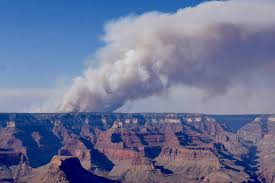Understanding the Impact of Wildfires in the Grand Canyon

Introduction
The Grand Canyon, a marvel of natural beauty and a UNESCO World Heritage site, is now facing challenges from increasing wildfires. As climate change intensifies, the frequency and severity of wildfires are becoming critical issues not just for the canyon itself but for the entire ecosystem that thrives in and around this national park. Understanding the causes and consequences of these wildfires is vital for preservation efforts and visitor education.
Recent Wildfire Events
In early September 2023, a wildfire erupted in the Grand Canyon’s North Rim area, leading to the evacuation of certain trails and campgrounds. The “Rainbow Fire,” as it has been dubbed, has consumed over 1,000 acres and was fueled by a combination of dry conditions and strong winds. The National Park Service (NPS) reported that initial containment efforts were hampered due to inaccessible terrain and ongoing high temperatures.
The NPS has been closely monitoring the situation while prioritizing the safety of both the firefighters and the public. Efforts have included aerial fire suppression and controlled burns aimed at reducing combustible materials in forested areas surrounding the canyon.
Environmental and Economic Impact
Wildfires pose a significant threat to the unique ecosystems found within the Grand Canyon. These fires can destroy animal habitats, alter landscape dynamics, and pose long-term risks to watershed areas. Experts assert that while fire is a natural part of the ecosystem, the increasing severity of these events may disrupt ecological balance and lead to invasive species taking root.
The economic ramifications are also noteworthy. The Grand Canyon is one of the busiest national parks, attracting approximately 6 million visitors annually. Wildfires create hazardous conditions that can lead to trail closures and travel disruptions, impacting local tourism-dependent economies. The park officials are working diligently to balance visitor access while prioritizing environmental safety.
Conclusion
The wildfires in the Grand Canyon serve as a stark reminder of the effects of climate change and the need for effective fire management strategies. As conditions continue to evolve, the importance of proactive measures, including public education about fire safety and ecological preservation, cannot be overstated. Moving forward, ongoing collaboration among federal, state, and local agencies will be crucial in addressing the threat of wildfires and protecting this national treasure for future generations.









